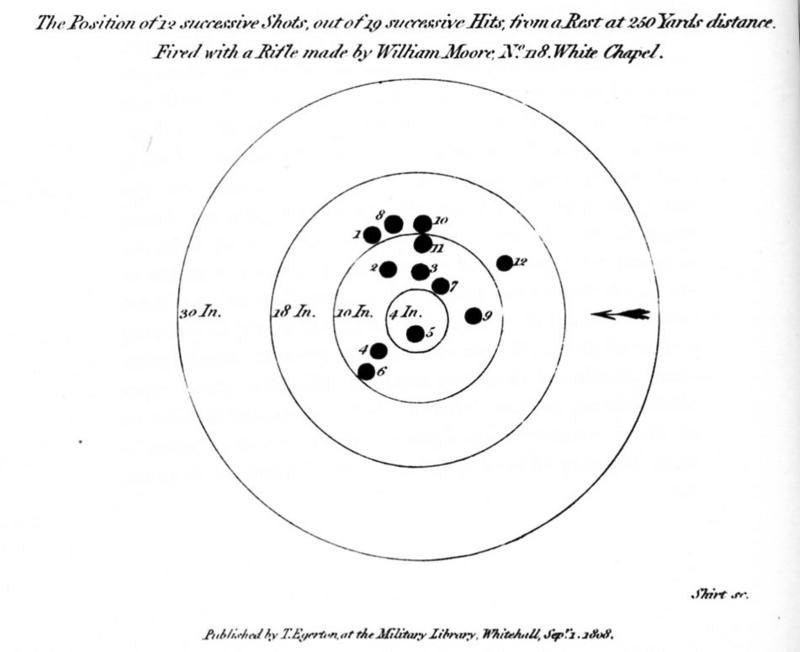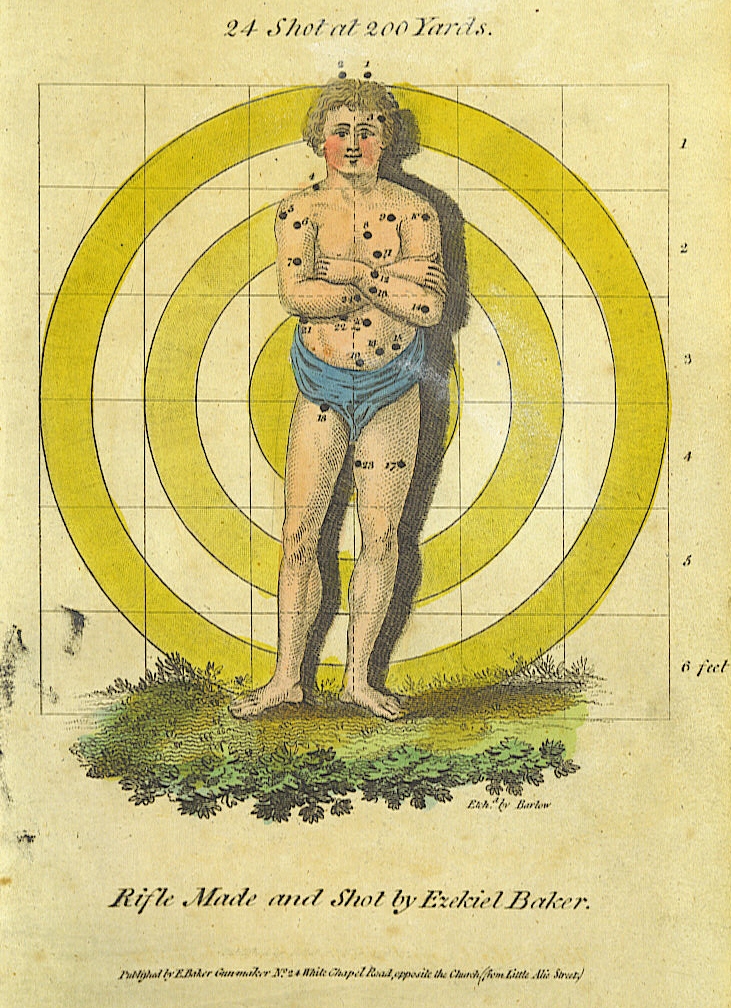Rifleman1776 said:
Artificer said:
BTW, for that hunter who bet he could hit a Dollar at 100 yards from the standing/offhand position enough times to bet on it with certainty and considering the size of the dollar coin was 1 1/2 inch, I would bet that rifle was capable of shooting 1 MOA (1 Minute of Angle or 1 inch at 100 yards). I know we don't often think of MOA for muzzleloading rifles, but that sure sounds to me like he had a 1 MOA rifle - at least until the distance got further and/or wind drove the ball off from where it would normally hit.
Gus
1 MOA is possible with an ml rifle.
But most offhand rifles won't accomplish that. Rifles that can find the 'X' consistently at 100 yards with a prb are invariably heavy bench rifles shot from a rest. OTOH, a good rifle in the hands of a good shooter can come close. At Friendship the participants in the Hawken and buffalo X-stick matches always amazed me with what they accomplished.
With sincere respect, I have to disagree with the emboldened sentence above, but it may be because of the way we describe things or it may be for other reasons.
First of all, if people won't go to the time and trouble of getting the very best amount and type of powder, patch, lubricant, etc. for their rifle - then it won't shoot at or near MOA at 100 yards, but that doesn't mean their "offhand" rifle is not capable of shooting at or near 1 MOA at 100 yards, it just means they accept less accuracy for their intended use of the rifle.
I get the very strong impression that many people here and other places are happy to accept accuracy in their rifle that is not the best it can or should be, but is "good enough for hunting or other purposes, because they don't target shoot" with their rifles.
Of course one has to have a rifle that is in a large enough caliber to buck the wind and hold accuracy at 100 yards. I don't doubt that a .32 or .36 caliber rifle would have a difficult time holding at or near 1 MOA at 100 yard. I'm not sure about a .40 cal. rifle, as I've never owned one, but a .45 cal. long rifle can surely at least come close to it. Herb mentioned he can hit a string at 100 yards with his reproduction Hawken Rifle, means his rifle is shooting BETTER than 1 MOA.
I also know that from shooting on benches all over the country, that many people don't get the best accuracy out of their rifles even at the bench. This is normally because they are not doing something as well as they could and or don't realize how to shoot best with a rifle from a bench and/or don't have the equipment to shoot the best from the bench. I have found this true time and again with rifles I shot under or at or near 1 MOA and other people I offered to use my bench equipment and the rifle and same load - could not equal what I had just shot. My eyes have never been that good, it is just I learned how to get better accuracy from the bench than many people because I pay attention to very small details that many other people don't. Of course the folks who shoot in real bench rest competition are normally not just as good, but usually better to much betteer than I off a bench and I have learned a lot from them over the years. A bench will allow one to keep much of the human error out of shooting and help separate what the rifle can do vs what human error will cause less accuracy, but it is only as good as what the person knows about shooting and how to use the bench to the best advantage. I included this paragraph mainly because good bench rest technique will help you determine CLOSE to what a rifle is capable of shooting, but is only as good as the person using the bench.
Now even if a rifle can shoot under, near or slightly larger than 1 MOA at 100 yards doesn't mean one can do it regularly or often from the Offhand/Standing position. That takes great eyesight or properly corrected vision, really good marksmanship technique and LOTS AND LOTS OF PRACTICE AND DRY FIRING. Most folks don't have the time to shoot that much or have never had the kind of marksmanship training to shoot that well and that includes even some of the best rifle shots in the country. Still, that doesn't mean the rifles are not capable of near or at 1 MOA at 100 yards, it just means most of us can't shoot them offhand/standing that well.
I was amazed at what the Hawken and other shooters could do at 100 yards with cross sticks and other kinds of competition the first time I went to the Primitive Range at Friendship in the spring shoot of 1974. This in part because they did take the time to get the very best accuracy load for their rifles. Fortunately, I got some great tips from them and other shooters who won on the primitive range at Friendship over the next six years, though I was not good enough to place high enough in matches to even mention in those days.
Though I did not become a Member of the U.S. International Muzzleloading Team until the mid 1990's, I knew a pretty fair number of them from Friendship and NSSA shooting beginning in the mid 70's. The reason I mention them is because they used original flintlock and percussion rifles and pistols. True, most were from the early to mid 1800's, but they were mechanically and technologically the same in most cases as 18th century rifles, except of course for percussion ignition system guns. Because the shooters took the time and trouble to get the very best loads for their guns and because they were some excellent shooters, they shot targets most of us are not able to equal. That tells me a lot about the period rifled rifles and pistols as to what they were capable of shooting, even if the people shooting them were not up to what the rifles/pistols were capable of in accuracy back in the day and now.
Of course, we are still limited in the accuracy of a round ball rifle at longer ranges with smaller calibers and to some extent by period sights. A significant part of the reason the Baker Rifle was accurate at such long range in the period was because it was .62 caliber. Then as now with a round ball rifle, you have to go bigger in caliber for better long range shooting.
Gus










